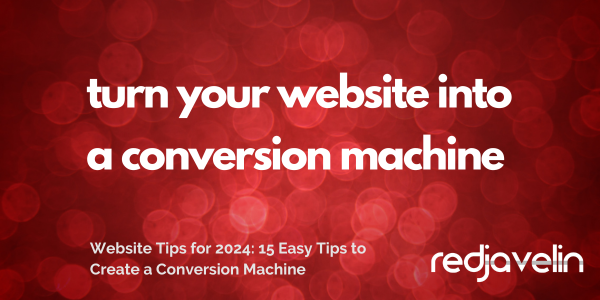 Your website is the most important tool that you have in your arsenal. Sometimes, we think that you can set it and forget it once it is live. Nothing could be further from the truth.
Your website is the most important tool that you have in your arsenal. Sometimes, we think that you can set it and forget it once it is live. Nothing could be further from the truth.
I recently analyzed a website for a client looking to swap out a TOF offer on their home page for a more technical MOF offer. The client team thought the TOF offer was too basic for their targeted persona. The data told a different story. The TOF offer was the highest converting content they had in their toolkit.
This is a good reminder to take a close look at the data before you jump in. Here are some strategies and tips to help you achieve optimize your site:
- Understand Your Audience: This seems very basic; however, you would be surprised at how many marketing teams don’t survey their sales team. Talk to your sales reps. They are on the front lines and can give you a good insight into what motivates potential customers. Simultaneously, conduct market research to understand your target audience's needs, preferences, and pain points. The combination of these insights will help you create buyer personas to tailor your content better and offers to their specific needs.
- Clear Call to Action (CTA): CTAs guide visitors on what actions to take next. Without clear CTAs, users might leave your website without interacting with your content or taking desired actions, such as making a purchase, signing up for a newsletter, or contacting you. You need to lead prospects through the buying process. Place prominent and compelling CTAs throughout your website, such as "Request a Quote," "Sign Up," or "Get Started." Make sure CTAs stand out visually, with contrasting colors and clear, concise copy.
- Lead Capture Forms: Lead capture forms are a primary means of collecting information from website visitors who have expressed interest in your products, services, or content. These forms allow you to capture potential customers' contact details, such as their name, email address, phone number, and more. Keep forms concise and request only essential information to reduce friction.
- Landing Pages: Create dedicated landing pages for specific campaigns or offers. Landing pages are designed with a specific conversion goal in mind, such as encouraging visitors to sign up for a newsletter, download an e-book, request a quote, or make a purchase. Their singular focus on a particular action reduces distractions and increases the likelihood of conversions. Optimize landing pages for conversions by maintaining a clear focus and removing distractions.
- SEO (Search Engine Optimization): SEO helps your website be found on the internet. Optimize your website for search engines to improve visibility in search results. Focus on keyword research, on-page SEO, and backlink building.
- Mobile Optimization: The majority of internet traffic now comes from mobile devices, such as smartphones and tablets. If visitors encounter a non-optimized website on their mobile device, they are more likely to leave immediately (with a high bounce rate). Ensure your website is responsive and mobile-friendly.
- Page Load Speed: Optimize page load times to reduce bounce rates and improve user experience. Compress images, use browser caching, and choose a reliable hosting provider.
- Validation: Display customer reviews, testimonials, and case studies to build trust. Showcase any industry awards, certifications, or partnerships to establish credibility. Prospects want to see that someone else, other than you, validates your offerings.
- Email Marketing Integration: Integration with an email marketing platform such as Hubspot enables you to automate personalized email campaigns. You can set up automated drip campaigns, welcome emails, abandoned cart recovery emails, and more to engage with users at the right time. Implement email capture forms and offer incentives like newsletters, discounts, or free resources. Use automated email marketing campaigns to nurture leads and move them through the sales funnel.
- A/B Testing: A/B testing helps you identify which variations of a webpage or specific elements (such as headlines, images, buttons, or forms) perform better in conversion rates. By optimizing these elements, you can increase the likelihood of visitors taking desired actions, such as signing up, making a purchase, or filling out a form. Continuously test different elements of your website to identify what converts best.
- Analytics and Tracking: Set up Google Analytics or other analytics tools to monitor visitor behavior and conversion rates. Use data insights to make informed decisions and optimize your website further.
- Social Media Integration: One of the primary goals of social media is to drive traffic to your website. Sharing blog posts, product pages, and other content on social media can attract users who may not have otherwise discovered your website. Promote your website and content on social media platforms to drive traffic and engage with your audience. Use social media advertising to target specific demographics and segments.
- Live Engagement: Implement chatbots or live chat support to engage with visitors in real time and answer their questions. Chatbots can provide round-the-clock customer support, ensuring that users can get assistance or information whenever they need it, even outside of regular business hours. Live chat and chatbots can assist users in making purchasing decisions, answering questions, and addressing concerns, ultimately leading to higher conversion rates.
- Exit-Intent Popups: Use exit-intent popups to offer last-minute incentives or capture contact information before visitors leave your site.
- User Experience (UX) and Design: You know the saying: a first impression is a lasting impression. Your website is often the first interaction a user has with your brand. A positive UX creates a favorable first impression, which can lead to increased trust, credibility, and engagement. Ensure a user-friendly design with easy navigation and a visually appealing layout. Minimize distractions and make it easy for visitors to find what they're looking for.
Remember that lead generation is an ongoing process, and what works for one website might not work the same way for another. Continuously monitor your website's performance, test new strategies, and adapt to changing market conditions to optimize your lead generation efforts effectively.




